 | 2000 foot rocket flight four point parachute harness (2011-06-28)      A flight of the Armadillo Aerospace "Mod" vehicle on 2010.06.26. This was the first flight test of a four-point drogue attachment system, which increases the stability of the system when falling with the engine off.
|
 | 2008/11/11-1 Slomo 500lbf Liquid Rocket Test (2011-06-28)      High speed video (300fps/one tenth speed) of the very first fire on Masten Space Systems' new VTVL rocket vehicle, XA-0.1B. A four engine vehicle, this is engine Y+. This first test is a start abort, where immediately after starting the engine, the throttle valves are closed and the engine is shut down. The cool fireball is isopropyl alcohol being ejected from the engine and burning in air; it is expected in a start abort and causes no damage. The blast deflector was damaged during testing of XA-0.1, and further damaged by me backing a pickup truck into it. The concrete pavers are tossed off when an edge is in the flow, and you can see one break by hitting another before it even reaches the ground. We tweaked the frame, put pavers back on, and it worked fine for the subsequent tests. More information at www.masten-space.com
|
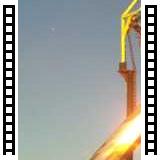 | 500lbf Rocket Engine Testing (2011-06-28)      Testing very small throttle movements with a 500 pound-force throttleable rocket engine on Masten Space Systems XA-0.1B rocket vehicle. The engine runs on liquid oxygen and isopropyl alcohol, and was putting out about 240lbf during the tests.
|
 | Aluminum engine by Masten Space (2011-06-22)      A firing of a Masten Space Systems lox/ipa rocket engine, using an all aluminum chamber.
|
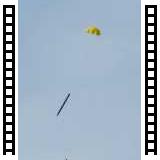 | Aluminum rocket engine on XA-0.1B-750 slomo (2011-06-28)      The last firing of the evening with the new aluminum chambered engine on Masten Space Systems' XA-0.1B-750 single engine VTVL flight demonstrator. The aluminum engine is incredibly light compared to more common copper-chambered engines. Night firings are so nice, they really show off the mach diamonds. This is near full throttle. It was a three second firing, and this is video at 300 frames per second, or 1/10th speed. That's also why there's no sound, as it doesn't record the audio at high speed.
|
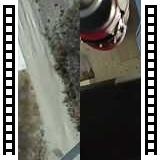 | Armadillo Aerospace 2000ft Rocket Robot Roll Vane Flight (2011-06-20)      A flight to 2000ft AGL of an Armadillo Aerospace "Mod" VTVL rocket, with a shiny new actuated roll vane, 2010/06/22. Rather than using cold gas thrusters to move the vehicle around the vertical axis (roll), an aerodynamic surface is actuated to provide roll. In the split screen, it's the aluminum plate on the right; the camera is pointed straight up. The view on the left is looking straight down, to show the roll orientation over time.
|
 | Autonomous Rocket Robot Vertical Takeoff and Landing (2011-06-28)      A test flight of Masten Space Systems' (www.masten-space.com Xombie vertical takeoff/vertical landing rocket vehicle, on February 12th, 2010. This flight was to 68.6 meters above launch level, and as you can see in the out video, even that short of an elevator ride gives an impressive change in perspective. That's the flightline of Mojave Air & Space Port, and Soledad Mountain in the distance. This vehicle won second prize, $150000, in the Northrop Grumman Lunar Lander Challenge Level 1. I know the videos aren't perfectly synced, but this is the first video I've ever done in Final Cut. The rocket runs on liquid oxygen and isopropyl alcohol. It's stabilized using a main engine gimbal and small reaction control thrusters.
|
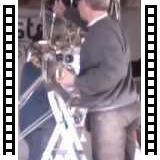 | Disassembly of Xoie (2011-06-23)      On December 9 2009, Ken, Joel and I took apart Xoie, the rocket with which we (Masten Space Systems) won the Northrop Grumman Lunar Lander Challenge Level 2, aka one million dollars. This video is about two hours of work in two minutes. The software chopped off the end, unfortunately. The LOX tank has since had some machining done on it and will become a test stand tank, and the IPA tank was cut in half to see what was wrong with it. The helium tanks are in storage, and some of the avionics will be reused. The plan is to rebuild the vehicle almost entirely, with an aeroshell. We'll then use it to explore the transonic regime and other issues with higher speed flights.
|
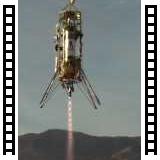 | First Rocket Hover of 2010! (2011-06-21)      Actually it's the second, the first was just before this but wasn't very long. Trying out a new controller. It does good on altitude, but is a bit too chilled out about position. The objective was to remove the engine gimbal oscillation visible at the end of this video: www.youtube.com In that respect, it was a success. And the rocket hardware performed well and lives to fly another day.
|
 | Flight 5 of XA-0.1B-750 (2011-06-23)      The fifth flight of Masten Space Systems XA-0.1B-750 single engine rocket vehicle of awesomeness. Here it gets a slight case of the vapors and does what we call a "hard abort", in which it shuts down the engine and vents both propellant tanks. In off-tether flight operations this is how the vehicle would be safely crashed, if it were to go off course or otherwise lose its mind. On tether, it simply hangs out in mid air for a moment in the style of Wile E. Coyote, then falls to the end of the strap and bounces a bit.
|
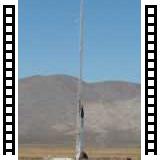 | Flometrics Biodiesel-LOX Rocket Flight (2011-06-28)      The flight of Flometrics' LOX-Biodiesel rocket. The engine puts out 1000lbf nominally, pushing the rocket to near Mach 1. The rocket was built by Flometrics, www.flometrics.com The fuel was made by EERC. The AFRL procured the fuel for Flometrics. The rocket was launched at FAR, the Friends of Amateur Rocketry, far.pyroinnovations.com This video was recorded by Ben Brockert of Masten Space Systems, masten-space.com
|
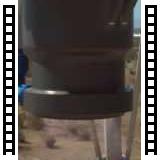 | Flying Xombie rocket robot plummets majestically - three view (2011-06-28)      Masten Space Systems Xombie rocket vehicle takes off with an alcohol/liquid oxygen engine, shuts the engine off in a fit of pique, and restarts it to land. Very very scary if you're there and you built it. This is the first time anyone has ever successfully restarted a biprop VTVL rocket in mid-air. Left camera is by Ken Brown, center is Tim Ellis who was in the second week of his internship, and right camera was one I sat on the concrete wall I was planning to hide behind if the rocket was to crash.
|
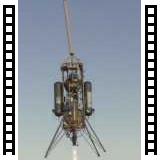 | Four and a half foot boosted hop, rocket throttle flight, 27 January 2010 (2011-10-08)      Here's the first Masten Space "boosted hop", where the rocket has strong acceleration, a parabolic coast phase over the top, and another strong acceleration for landing. You can see when the engine throttles up because the plume gets larger and the mach diamonds get farther apart. This was the first attempt at a boosted hop, which is why we kept it short and on the tether. The tether to the forklift keep the vehicle safe if it needs to shut down the engine unexpectedly. The forklift weighs 20900lb, and can easily hold the 710lb rocket. www.masten-space.com
|
 | High speed video rocket mach diamond shock diamonds (2011-06-23)      Closeup of rocket fire in high speed, with a bit of a startup transient. The pulsing at the end is the purge gas pushing the extra propellant in the lines out. The rocket is hinged and is commanded to move slightly. The mach diamonds are a bit ugly because there was some minor throat damage early in the engine's life. 300 frames per second' played back at 1/10th speed.
|
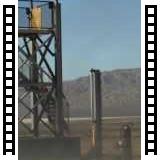 | Hybrid rocket engine by Jeff Jakob (2011-06-28)      A hybrid rocket engine built and static tested by Jeff Jakob, www.rockethigh.com The rocket was tested at the Friends of Amateur Rocketry test site in the Mojave desert.
|
 | Masten Space Flight 10 2009.07.02 (2011-06-23)      The first test of 'autoland' capability on Masten Space Systems' XA-0.1B-750 vertical takeoff, vertical landing rocket vehicle. The vehicle is commanded to take off, then land itself and shut off the engine when it detects that it has landed. Previous flights shut down the engine after a specific time, rather than after landing detection. www.masten-space.com
|
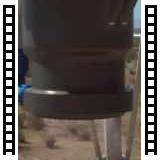 | Masten Space flying rocket robot lofted over the top - first ever engine relight! (2011-06-28)      Masten Space Systems XA-0.1B-750 rocket vehicle takes off, translates off the pad, boosts, shuts of the engine, I have a heart attack and die, then it relights the engine and comes back down to the pad. This is the first time a VTVL rocket has relight the engine in flight, ever, in the history of the planet! Many angles for your viewing pleasure. In the last clip Ian Garcia is running the laptop and telling the rocket to fly, I, Ben Brockert am running the show and operating the super high-tech tracking antenna system, and Randall Clague steps in to congratulate. Thanks to Mike Massee for the first video. www.masten-space.com
|
 | Masten Space Lunar Lander Challenge Leg 2 - Out (2011-06-24)      The out looking camera from the pad B to pad A flight of the level 2 of the Northrop Grumman Lunar Lander Challenge. There's the airplane storage area, the Mojave Air & Space Port flight line, Mojave itself, Soledad Mountain, etc.
|
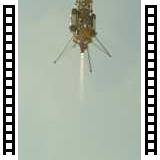 | Masten Space NGLLC Level 2 Handheld (2011-06-23)      Since I didn't have to hold an abort button for these flights, I held a camera. Here is the second NGLLC flight of 07 October 2009. This qualified us for a $150000 prize.
|
 | Masten Space Systems first flight (2011-06-28)      The very first flight attempt on Masten Space Systems XA-0.1B-750 vertical takeoff, vertical landing rocket vehicle. A liquid oxygen/isopropyl alcohol, 800 pound-force rocket engine propels the vehicle on a short up/down trajectory. The engine's two axis gimbal keeps the vehicle with firey end down. For more information, visit www.masten-space.com
|
 | MiniSShot high speed (2012-01-24)      1/20th speed video (600fps) of the "MiniSShot" engine of the Sugar Shot to Space program, http://sugarshot.org/ The engine has two sections and does two burns, which is the primary technical challenge of this motor. This was a test on 26 July 2009 at the Friends of Amateur Rocketry test site.
|
 | MiniSShot Tower Test (2011-10-09)      A test of a tower launcher at Friends of Amateur Rocketry (FAR), in consideration for use with the Mini Sugar Shot (MiniSShot) rocket, part of the Sugar Shot To Space program. It's at 1/10th speed slow motion. Sorry it's so slow, I didn't have time to speed it up. The ignition was a bit poky. I think that's Rick Maschek doing the test, I suck at recognizing faces.
|
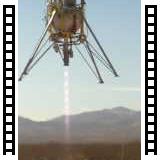 | Minute and a half rocket hover flight in wind with mach diamonds 2009.09.13 (2011-06-21)      The second flight of the day, flight 27 on Masten Space Systems' XA-0.1B-750 vertical takeoff, vertical landing rocket vehicle. The vehicle hovers higher this time, to make less of a crater in the concrete, then descend at 90 seconds, hovers briefly, and 'lands'. This flight was a bit less than two hours after the first one. The wind had picked up at this point, and was reported to have gusts to 26 knots, which is 30 miles per hour. B leans into the wind and keeps flying.
|
 | MSS XA-0.1B-750 Flight 7 real time (2011-06-28)      Flight 7 of the Masten Space Systems reusable launch vehicle demonstrator XA-0.1B-750. Here it was programmed to fly a square pattern around the center, and then do 45 degree rotation and back using RCS before landing. The flight was 30 seconds long, here played at 1/10th speed. This is the first bipropellant RLV to fly with an aluminum rocket engine, the second flight of the day with that engine, and the 7th flight of this vehicle.
|
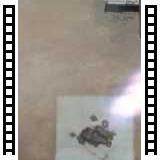 | NGLLC Masten Space Flight 1 Onboard Rocket 2009.09.16 (2011-06-22)      Onboard down-looking video of the first leg of Masten Space's attempt at the level 1 Northrop-Grumman Lunar Lander Challenge. Woo, rockets. www.masten-space.com
|
 | Onboard Xombie rocket video, engage the air brake - 2010.03.20 (2011-06-22)      The view from a camera near the control bunker and two onboard cameras. Masten Space Systems XA-0.1B-750 rocket, aka Xombie, flies to over 1000 feet before coming down and landing almost exactly where it took off from. The rocket flies completely autonomously, using differential GPS and a six-axis inertial measurement unit. We click go on a laptop, and it flies itself. Runs on isopropyl alcohol and liquid oxygen, about as forgiving as you can get in rocket propellants. You could stick your hand in either.
|
 | Progression of Xombie Rocket (2011-06-28)      The last multi-engine test on B to the first single engine flight, through the Lunar Lander Challenge when we won $150000. This is Masten Space Systems Xombie autonomous flying rocket vehicle, which runs on liquid oxygen and isopropyl alcohol.
|
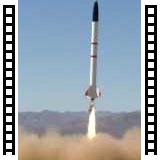 | RATTworks tribrid flight - watch to end! (2011-06-28)      A tribrid by Dave Griffith of RATTworks launches. www.rattworks.net The tail section of the rocket was not attached to a parachute and, as you can hear on the video, "came in hot". It was perfectly safe, as everyone present was aware of what was happening and were under cover. The rocket was also angled away from the people doing the test.
|
 | RATTworks tribrid flight slomo (2011-06-23)      Butterflies fly through the scene. And then a tribrid by Dave Griffith of RATTworks launches.
|
 | Robot xombie rocket wants to be your friend (2011-06-28)      Masten Space Systems Xombie rocket on a test flight on March 18 2010. I missed the top end framing a bit on this one, but after watching it a few times I think it's better this way. It enters from stage left, zooms down and stops perfectly in the frame. What the heck are we looking at? This is the view looking close to straight up next to a pad from which an autonomous rocket takes off, flies to 66 meters, and lands.
|
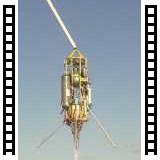 | Rocket "boosted hop" soft abort to 823.4 meters, 27 January 2010 (2011-10-09)      823.4 meters above sea level, that is. It started at 822.2 meters above sea level idle hover position, making it about a 4 foot hop. On this flight Ian told the rocket to soft abort right after takeoff, which meant that it went into an automatic landing routine. What's a boosted hop? It's where the vehicle accelerates rapidly to get vertical velocity, then sets the engine down to idle, coasts over the top, then throttles up again to land. It's more similar to a suborbital science flight than the velocity-based hovering flights we've done so far. This was obviously a very small test to see how the new controller and new guidance routine works, and it behaved quite nicely. It's flying on the tether to keep the vehicle safe. A payload on the vehicle would have felt 1.4g on the boost portion. The acceleration is slightly less than normal gravity on the coast, about 0.7g, equivalent to the gravity at the top of the clouds of Uranus. www.masten-space.com
|
 | Rocket Igniter Test (2011-06-22)      First run of the Masten Space Systems rocket engine igniter version 2.1. It runs on gasesous oxygen (GOX) and isopropyl alcohol (IPA).
|
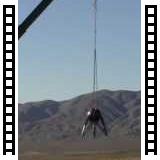 | Unreasonable Rocket 84 second hover (2011-06-22)      A test of the Unreasonable Rocket ( unreasonablerocket.blogspot.com ) Blue Ball vehicle hovering, more or less, for approximately 84 seconds. The vehicle is a candidate for the Lunar Lander Challenge, which requires a 90 second hover.
|
 | Unreasonable Rocket First Free Flight - 11 July 2009 (2011-06-21)      The first free flight of Unreasonable Rocket's Blue Ball, a peroxide monopropellant vehicle. I've seen a lot of rockets fly, and it's still amazing to see one hover on a mostly invisible plume of steam. The rocket runs on hydrogen peroxide and is controlled by jet vanes in the engine exhaust. unreasonablerocket.blogspot.com Filmed by Ben Brockert of Masten Space Systems, masten-space.com
|
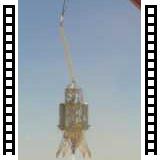 | XA-0.1B-750 flight 11, 2009.07.02 (2011-06-23)      The third flight of the day on Masten Space Systems' rocket vehicle. Another test of autolanding with some changes, this one doesn't work quite as well. That's why we fly on tether.
|
 | XA-0.1B-750 flight 2 - 2009.05.20 (2011-06-23)      Flight 2 of the Masten Space Systems vertical takeoff, vertical landing reusable launch vehicle demonstrator XA-0.1B-750. Here the camera was mounted to one leg of the vehicle, pointing at the engine and the opposite leg. The weird streaks in the mach diamonds are artifacts of the way the cheap HD camera scans the scene.
|
 | Xoie rocket testing compilation (2011-06-23)      A compilation of Masten Space Systems Xoie hovering rocket robot made for the Space Access conference. A static test followed by a series of flight tests before the Northrop Grumman Lunar Lander Challenge, a Nasa Centennial Challenge. All tests are in the last week or so of October, 2009.
|
 | Xombie rocket goes up and away, then back (2011-06-28)      Masten Space Systems Xombie rocket flies to 1046 feet at FAR. 60mph up, 60mph down, plenty of propellant remaining.
|





































































































































































































































